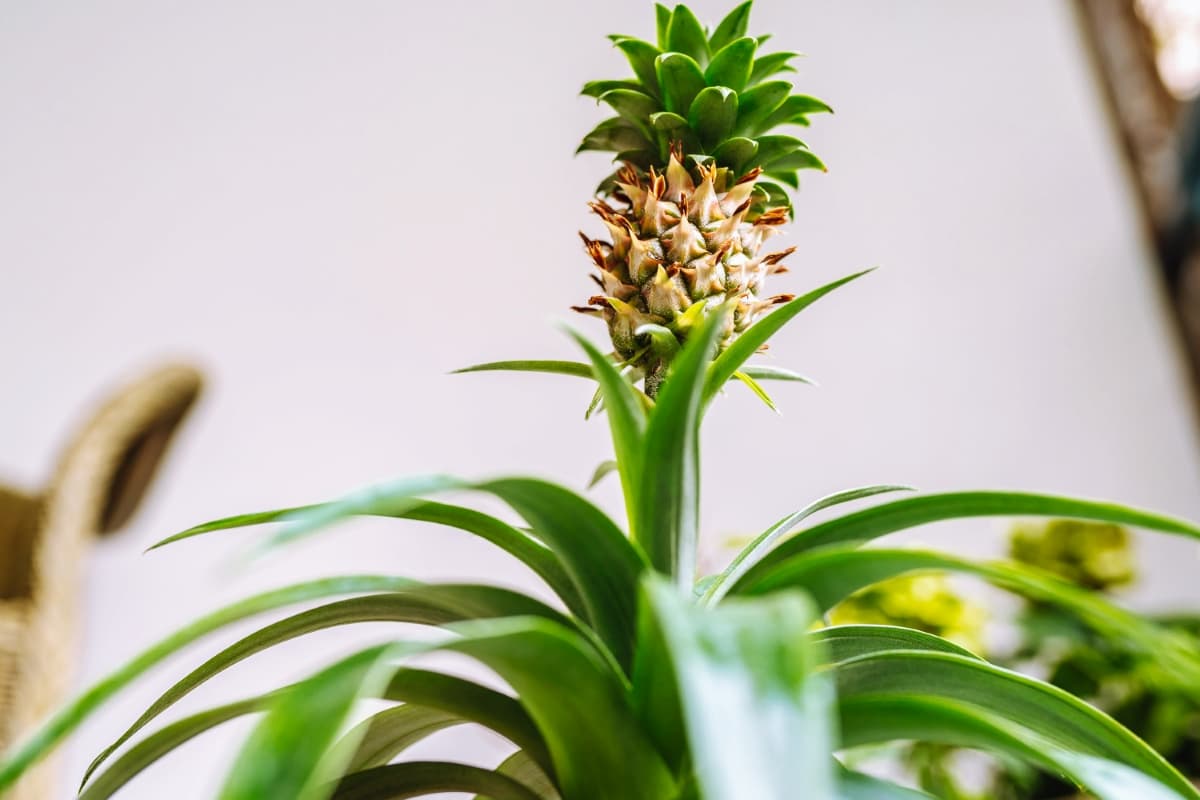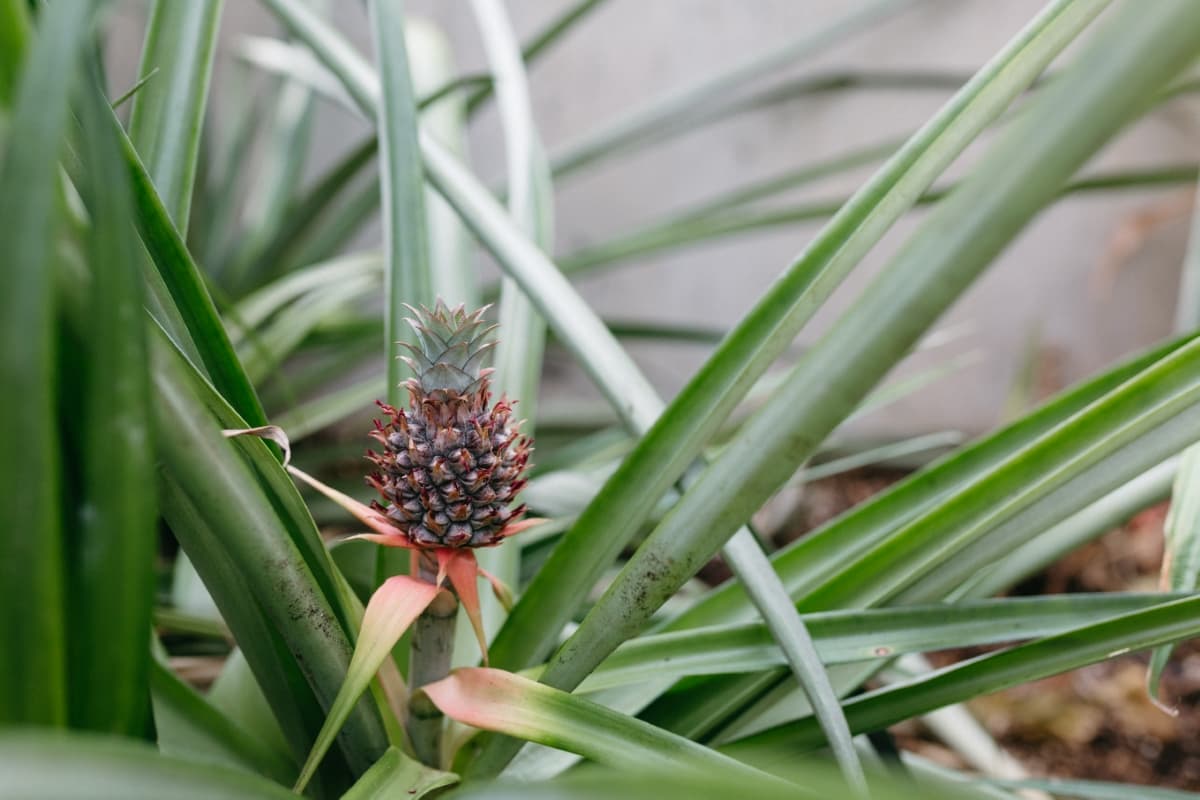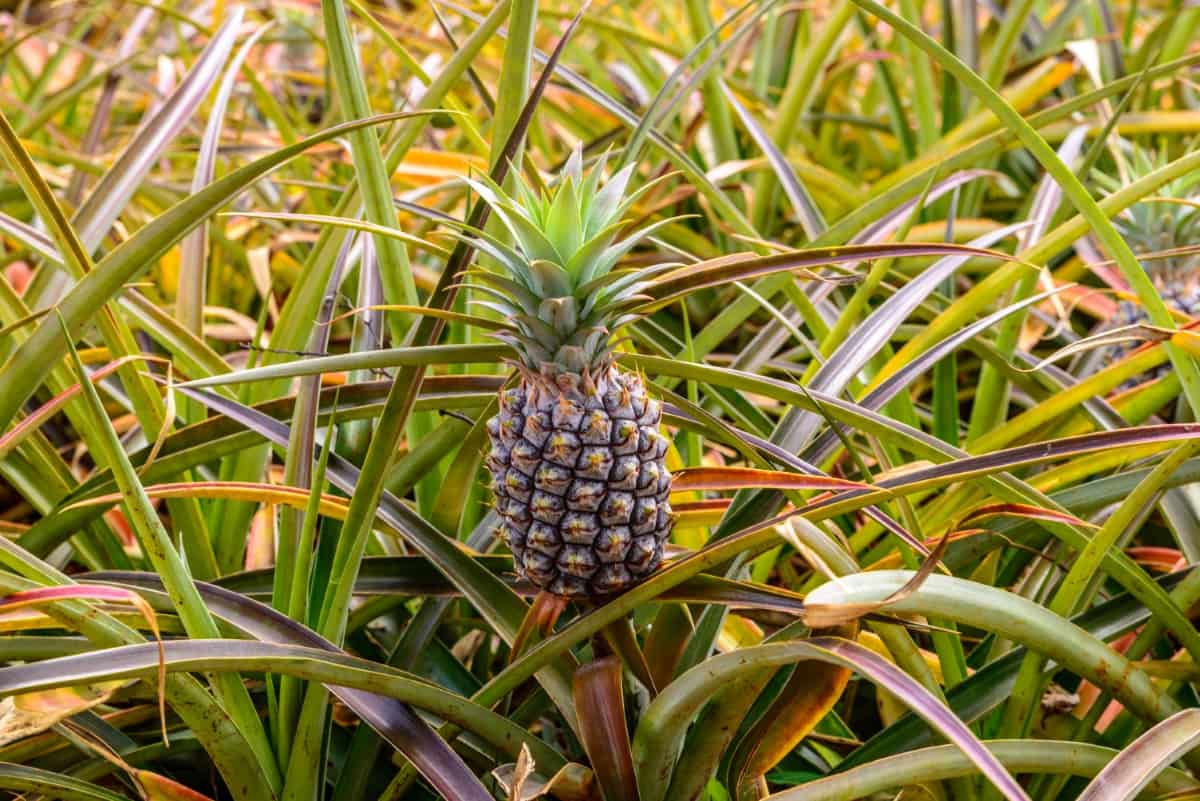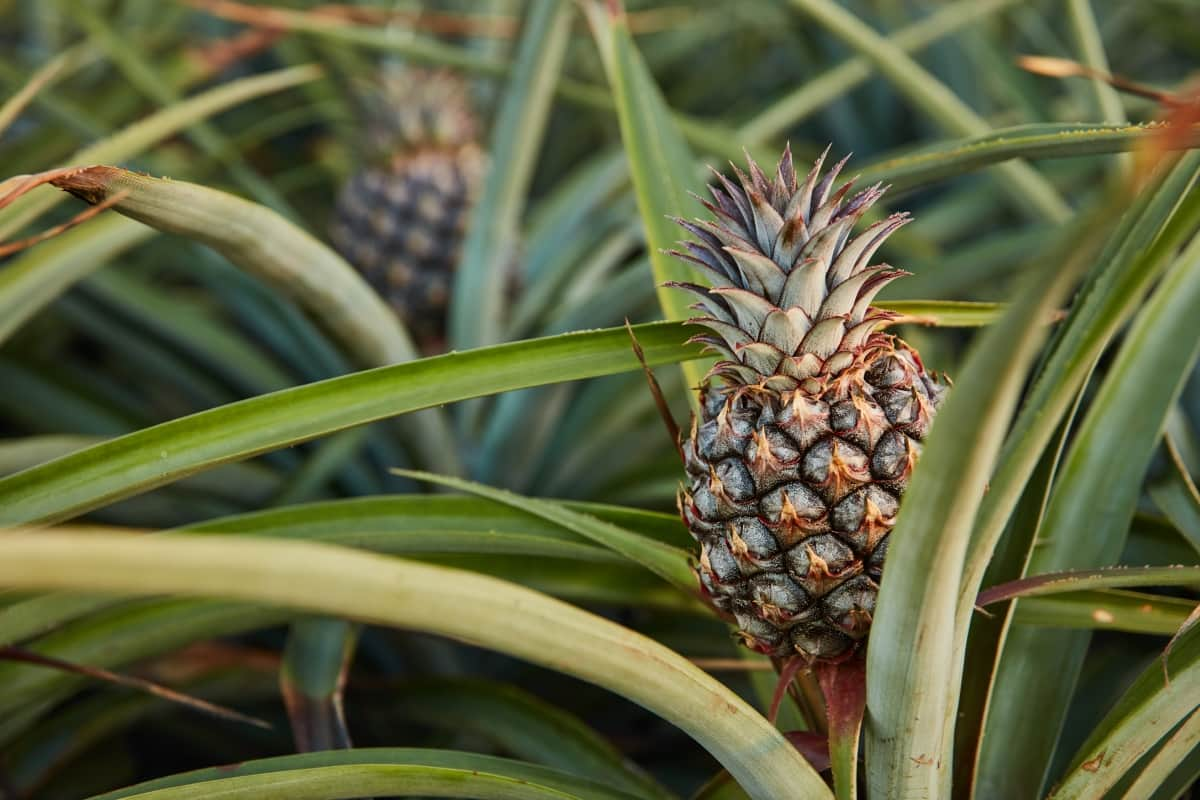The Pineapple, scientifically called Ananas comosus is a tropical fruit plant, and it belongs to the Bromeliaceae family. Selecting quality Pineapple planting material is essential for a successful harvest. With a little bit of effort and patience, you’ll soon be enjoying the tropical taste of freshly grown Pineapples in your garden.

Selecting Quality Pineapple Planting Material
Look for healthy Pineapple suckers or slips that are free from any signs of disease or damage. Choose ones with vibrant green leaves and strong roots. Ensure the planting material is mature enough but not too old, as younger plants tend to establish themselves better in the soil. Avoid using overly small or weak suckers, as they may struggle to thrive once planted. Inspect the base of the sucker or slip for any rotting or discoloration, as this can hinder growth potential. Opt for varieties known for their sweetness and productivity to ensure a bountiful yield.
Understanding Pineapple Growth Cycles
Pineapples have fascinating growth cycles that are essential to understand for successful cultivation. The growth of a Pineapple plant begins with planting the suckers or slips in well-prepared soil. As the plant matures, it goes through different stages of development, from establishing its roots to producing leaves and ultimately forming the fruit.
During the vegetative phase, the Pineapple plant focuses on leaf production and root establishment. This stage is crucial for building a strong foundation for healthy growth and future fruiting. Once the plant reaches maturity, it transitions into the reproductive phase, where it starts developing flowers that eventually turn into Pineapples.
Pre-Planting Soil Preparation
Pre-planting soil preparation is a crucial step in ensuring the success of your Pineapple cultivation venture. Before you even think about putting those suckers or slips into the ground, you need to make sure that your soil is prepped and ready for optimal growth.
In case you missed it: Growing Pineapple from Cuttings, Tops at Home

Start by clearing the area of any debris or weeds that may hinder the growth of your Pineapples. It’s like giving them a clean slate to start their journey towards becoming sweet and juicy fruits. Next, consider testing your soil to determine its pH levels and nutrient content. Remember, healthy soil equals healthy plants.
Methods of Planting Pineapple Suckers and Slips
Pineapple suckers are shoots that grow from the base of the plant, while slips are small offshoots that develop between the leaves. Both can be used for propagation. To plant Pineapple suckers or slips, carefully remove them from the mother plant with a sharp knife, making sure to include some root tissue.
Before planting, allow the cuttings to dry out for a day or two. This helps prevent rotting and promotes healthy root development once planted in well-draining soil. Make sure to plant them at an appropriate depth, ensuring that they have good contact with the soil but aren’t buried too deep.
Optimal Planting Density for Maximum Yield
When it comes to planting Pineapples, achieving optimal planting density is crucial for maximizing yield. Planting too close together can lead to competition for nutrients and sunlight, resulting in smaller fruits. On the other hand, spacing them too far apart might not utilize the available space efficiently.
To ensure maximum yield, it’s essential to follow recommended guidelines for planting density based on your specific variety of Pineapple. This will help each plant receive adequate resources without overcrowding or wasting valuable land. By strategically spacing out your Pineapple plants at the right distance, you can promote healthy growth and development throughout their lifecycle.
Arrangement and Spacing Strategies
Pineapple plants need sufficient space to grow and thrive, so proper planning is essential. Arrange your Pineapple plants in rows that allow for easy access and maintenance. A well-organized layout can make tasks like weeding and fertilizing more efficient. Pineapples need enough space to spread their roots and leaves comfortably. Generally, it is recommended to plant them about 12-18 inches apart in rows that are at least 3 feet apart.
In case you missed it: Pineapple Gardening For Beginners, How To Start

This spacing allows each Pineapple plant to have ample room for root development while also receiving sufficient sunlight and airflow. Providing the right amount of space between plants helps prevent overcrowding, which can be affected by competition for nutrients and water. Additionally, proper spacing facilitates easier weed control and pest management by allowing better access to maintenance activities. Spacing between each Pineapple plant is crucial for optimal growth.
Using Mulches in Pineapple Cultivation
Mulching not only helps retain soil moisture but also suppresses weed growth, reducing the competition for nutrients that Pineapples need to thrive. By applying an organic mulch layer around your Pineapple plants, you create a protective barrier that keeps the soil temperature stable and prevents erosion. This is beneficial in areas with extreme weather conditions.
Additionally, organic mulches gradually decompose over time, enriching the soil with valuable nutrients essential for healthy Pineapple growth. Pineapples have shallow roots, making them susceptible to fluctuations in soil moisture and temperature; mulches help maintain these levels consistently.
Integrating Inter-Cropping Systems
Inter-cropping systems in Pineapple cultivation involve growing two or more crops together to maximize land use and productivity. By strategically planting complementary crops alongside Pineapples, farmers can promote biodiversity and improve soil health. Additionally, intercropping helps control pests and diseases by disrupting their habitats through diverse cropping patterns.
Integrating inter-cropping systems requires careful planning and consideration of each crop’s growth requirements to ensure successful coexistence. By adopting sustainable agricultural practices like inter-cropping, farmers can create resilient farming systems that contribute to long-term environmental and economic sustainability within the Pineapple industry.
Application of Starter Fertilizers During Planting
When planting Pineapples, using starter fertilizers can significantly improve the growth and development of your crop. These specialized fertilizers provide essential nutrients that help jumpstart the plant’s growth right from the beginning. Starter fertilizers are formulated to promote strong root establishment, which is crucial for Pineapple plants to thrive in their early stages.
In case you missed it: How to Prepare the Soil for Pineapple Plants: Best Soil Mix, pH, Compost, and Recipe

The nutrients found in starter fertilizers play a vital role in supporting overall plant health and vigor. With the proper application of starter fertilizers, you set your Pineapple plants on the path toward robust growth and productivity.
Initial Watering and Care Post-Planting
After planting your Pineapple suckers or slips, the next crucial step is providing them with the right amount of water and care to ensure healthy growth. Watering immediately after planting helps settle the soil around the roots and reduces transplant shock. Remember that the soil remains consistently moist during the initial stages of growth. After planting your Pineapple, it’s crucial to provide it with proper watering and care to ensure healthy growth.
This includes giving the plant enough water without drowning its roots. Pineapples prefer well-draining soil, so be mindful not to overwater them. After planting, water the Pineapple thoroughly, but avoid saturating the soil. By following these growing requirements and providing initial watering and care post-planting, your Pineapple plants will thrive and reward you with sweet, juicy fruits.
- How to Grow Hibiscus from Flower
- Plantation Ideas for Home Decoration: A Beginners Guide
- Flower Garden Designs and Layouts for Beginners
- Planting and Spacing Techniques in Papaya: A Beginner’s Guide
- Growing Gold: Essential Techniques for Planting Pineapples
- How to Make Kalanchoe Plant Bushy: Home Remedies and Solutions
- 11 Reasons Why Your Gardenia is Not Blooming: Home Remedies and Solutions
- Eco Elegance: The Guide to Designing a Drought-Tolerant Landscape
- Gardening on a Slope: Strategies for Hillside Landscaping